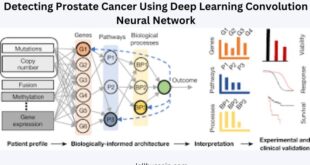Deep learning is a concerned field or subfield of machine learning which is comprised of various structures, functions, built-in algorithms, etc. which are called artificial neural networks or simply called the brain of the neural networks. If you are starting as a beginner or have less experience you may get …
Read More »How To Analyze The Dynamics Of Sleep Electro Encephalo Graphic (EEG) Using Threshold-Dependent Symbolic Entropy
Abstract Sleep is regulated autonomously with circadian behavior. Sleep disorders greatly impact major sleep disturbances in patients suffering from Parkinson’s disease (PD) and epilepsy affecting sleep at night and increasing abnormality of muscle tones during the NREM stage. The aim of this research is to quantify the dynamics of sleep …
Read More »Detecting Congestive Heart Failure by Extracting Multimodal Features and Employing Machine Learning Techniques
The adaptability of heart to external and internal stimuli is reflected by the heart rate variability (HRV). Reduced HRV can be a predictor of negative cardiovascular outcomes. Based on the nonlinear, nonstationary, and highly complex dynamics of the controlling mechanism of the cardiovascular system, linear HRV measures have limited capability …
Read More »Analyzing the Dynamics of Lung Cancer Imaging Data Using Refined Fuzzy Entropy Methods by Extracting Different Features
The dynamics of lung cancer is the major cause of cancer-related deaths worldwide, with poor survival due to the poor diagnostic system at the advanced cancer stage. In the past, researchers developed computer-aided diagnosis (CAD) systems, which radiologists greatly used for identifying abnormalities and applying a few feature-extracting methods. The …
Read More »Automated lung cancer detection based on multimodal features extracting strategy using machine learning techniques
Paper presentation title “Automated lung cancer detection based on multimodal features extracting strategy using machine learning techniques. In Medical Imaging 2019: Physics of Medical Imaging (Vol. 10948, p. 109483Q). International Society for Optics and Photonics.in SPIE MEDICAL IMAGING 16-21 February 2019, San Diego, California, United States. Abstract: Lung Cancer is …
Read More »Applying Bayesian Network Approach to Determine the Association Between Morphological Features Extracted from Prostate Cancer Images
Abstract: Cancer is a major public health problem across the globe due to which millions of deaths occur every year. In the United States, prostate Cancer is the second leading cause of cancer related deaths in men. The major causes of prostate cancer include increasing age, family history, diet, sexual …
Read More »Arrhythmia Detection using Hybrid Features Extracting Strategy
Cardiac arrhythmias are disturbances in the rhythm of the heart manifested by irregularity or by abnormally fast rates (‘tachycardia’) or abnormally slow rates (‘bradycardias’). In the past researchers extracted different features extracting strategies to detect the arrhythmia. Since, signals acquired from subjects suffered with arrhythmia are multivariate, highly nonlinear, nonstationary, …
Read More »Detecting Brain Tumor using Machine Learning Techniques Based of Different Features Extracting Strategies
Background: Brain tumor is the leading reason for death in people. It is obvious that the chances of survival can be increased if the tumor is identified and properly classified at an initial stage. MRI (Magnetic Resonance Imaging) is one source of brain tumors detection tool and these are extensively …
Read More »Symbolic time series analysis of electroencephalographic (EEG) epileptic seizure and brain dynamics with eye-open and eye-closed subjects during resting states
Objective Epilepsy is a neuronal disorder for which the electrical discharge in the brain is synchronized, abnormal and excessive. To detect the epileptic seizures and to analyse brain activities during different mental states, various methods in non-linear dynamics have been proposed. This study is an attempt to quantify the complexity …
Read More »A multi-modal, multi-atlas based approach for Alzheimer detection via machine learning. International Journal of Imaging Systems and Technology
The use of biomarkers for early detection of Alzheimer’s disease (AD) improves the accuracy of imaging‐based prediction of AD and its prodromal stage that is mild cognitive impairment (MCI). Brain parcellation‐based computer‐aided methods for detecting AD and MCI segregate the brain in different anatomical regions and use their features to …
Read More »